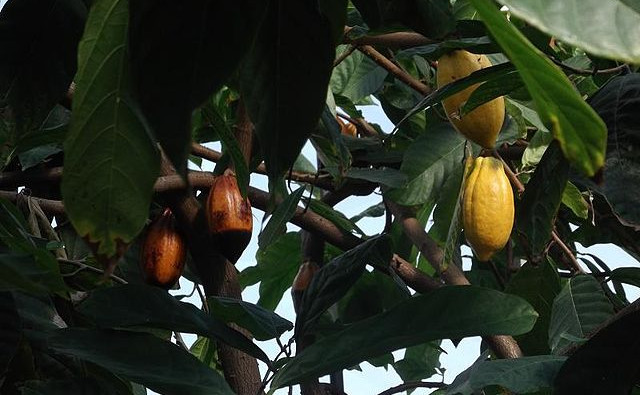The Cacao Tree, scientifically known as Theobroma cacao, is a small evergreen tree native to the deep tropical regions of the Americas. Its name, derived from Greek, means “food of the gods,” a fitting title considering the historical and cultural significance of cacao. The tree’s seeds, commonly referred to as cocoa beans, are the primary ingredient in chocolate production, a process that has been refined over centuries from ancient rituals to modern industrial methods.
Cacao trees thrive in hot, rainy environments, typically under the canopy of taller trees in the rainforest. They bear fruit directly on their trunk and branches, a phenomenon known as cauliflory. The fruit, or cacao pod, is an elongated capsule that contains 20 to 60 seeds nestled in a sweet, pulpy matrix. It takes about five years for a cacao tree to produce its first pods, and a single tree can yield up to two thousand beans a year, though this is a rough estimate as yields vary widely.
The journey from bean to chocolate begins with the harvest. Cacao pods are harvested by hand, using machetes to cut the pods from the trees without damaging the flower buds that will produce future crops. Once collected, the pods are opened, and the seeds, along with the surrounding pulp, are removed for fermentation. Fermentation is a crucial step that develops the beans’ flavor. Over several days, naturally occurring yeasts and bacteria ferment the pulp, which generates heat and causes the beans to undergo chemical changes, reducing their bitterness and enhancing their chocolate flavor.
After fermentation, the beans are dried, a process that halts fermentation and prepares the beans for storage and transport. Drying must be done carefully to prevent mould and ensure even moisture content. The beans are spread out in the sun on large trays or mats and turned regularly. Once dried, the beans are cleaned and roasted, a step that further develops the chocolate flavour. Roasting temperatures and times vary depending on the desired flavour profile.
The roasted beans are then cracked, and their shells are removed to produce cacao nibs. These nibs are ground into cocoa mass, also known as cocoa liquor, even though it contains no alcohol. This cocoa mass is the essence of chocolate and can be further processed into cocoa butter and cocoa powder, or mixed with sugar and milk (for milk chocolate) to create different types of chocolate products.
Modern chocolate making involves additional steps, such as conching, where the chocolate is continuously mixed and aerated to improve texture and flavor, and tempering, a controlled process of heating and cooling the chocolate to stabilize it for a glossy appearance and crisp snap.
The transformation of Theobroma cacao seeds into chocolate is a complex blend of art and science, deeply rooted in tradition yet continually evolving with modern culinary techniques. From the ancient Mesoamerican civilizations who first cultivated and valued the cacao tree to today’s global chocolate industry, the journey of cacao from bean to bar remains a fascinating testament to human ingenuity and our enduring love affair with chocolate.
